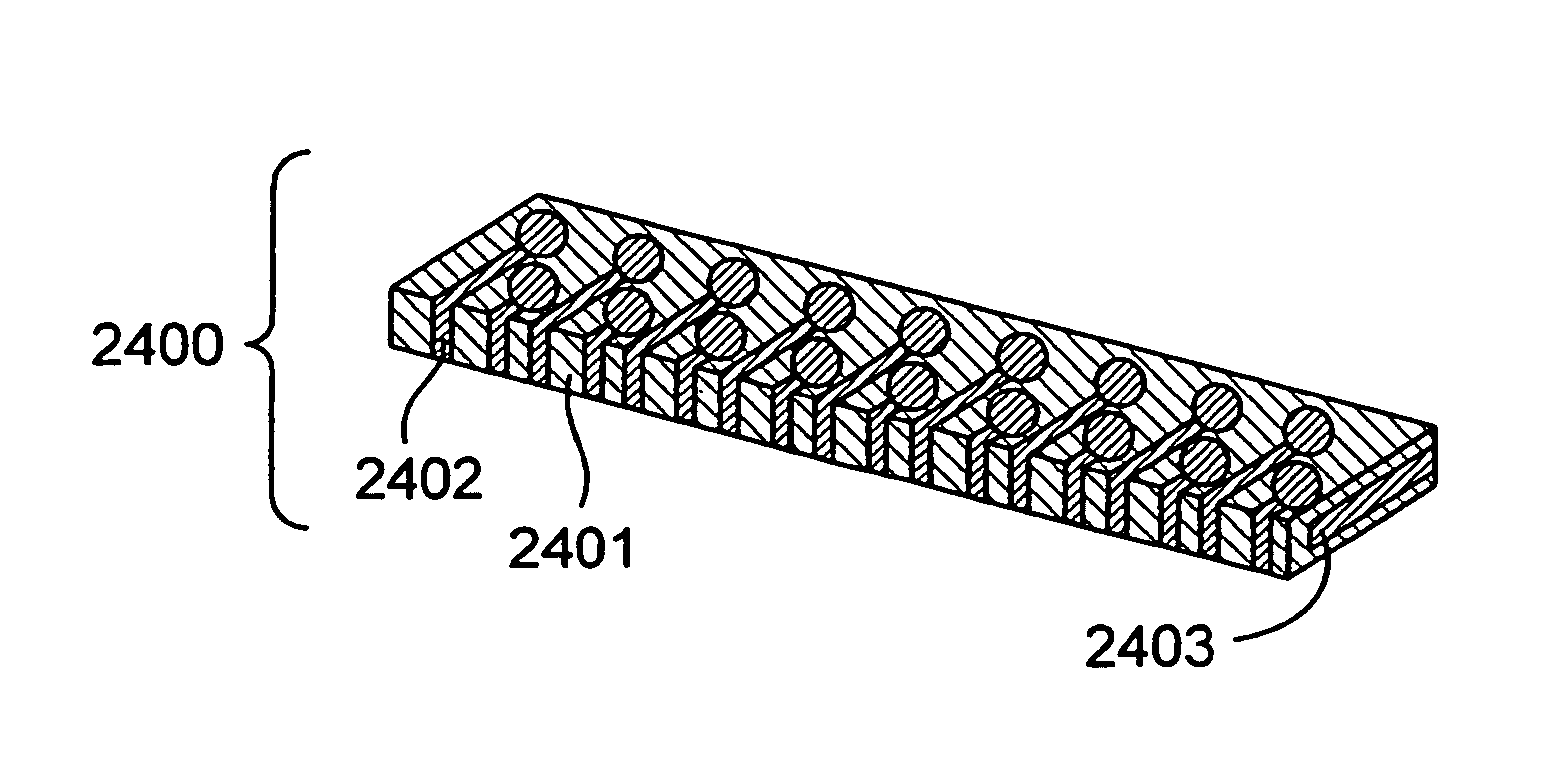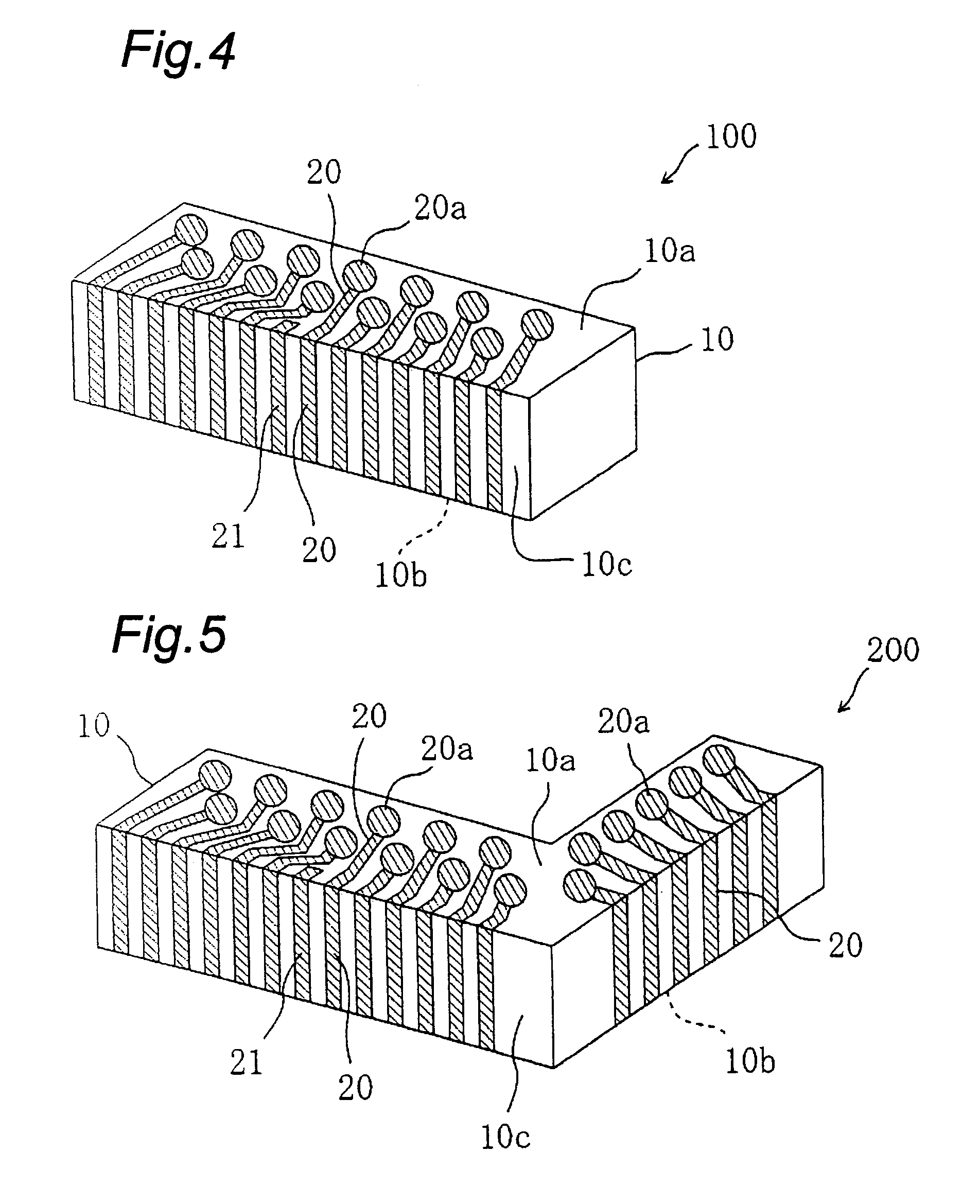Connection member and mount assembly and production method of the same
a technology of connecting member and mounting assembly, which is applied in the direction of connection contact member material, semiconductor/solid-state device details, coupling device connection, etc., can solve the problem of difficult small thickness of electronic devices, inability to accommodate further miniaturization and a much finer pitch of circuit boards, and high cost of forming on printed boards many lands and wiring, etc. problem, to achieve the effect of stably connecting, high production efficiency and high productivity
- Summary
- Abstract
- Description
- Claims
- Application Information
AI Technical Summary
Benefits of technology
Problems solved by technology
Method used
Image
Examples
embodiment 1
[0196]A connector sheet which is an embodiment of a connection member of the present invention is described as a first embodiment. FIG. 1 is a perspective view which schematically shows a connector sheet of the present invention and FIG. 2 shows a section where a U / L-shaped side wiring 20, and lands 20a and 20b shown in FIG. 1, are placed. The connector sheet 100 of this embodiment has a sheet substrate 10 and a plurality of U / L-shaped side wirings 20. The sheet substrate 10 has an upper surface 10a, a lower surface 10b which is opposite to the upper surface 10a, and a side surface 10c connecting the upper surface 10a and the lower surface 10b. One end portion 20a (land) of the U / L-shaped side wiring 20 exists on the upper surface 10a of the sheet substrate 10, the U / L-shaped side wiring 20 extends from the end portion 20a and passes the side surface 10c of the sheet substrate 10 and reaches the lower surface 10b, and the other end portion 20b of the wiring 20 exists on the lower su...
embodiment 2
[0255]Next, an embodiment of a mount assembly which is constructed by the connector sheet of the present invention and a circuit board is described below.
[0256]FIG. 14 shows a mount assembly wherein two circuit boards (for example, printed circuit boards) 503 and 504 are connected in a direction parallel to a principal surface by the connector sheet 100 of the first embodiment. The connector sheet 100 is disposed between the circuit boards 503 and 504 as shown in FIG. 14, and electrically connects them.
[0257]In the mount assembly shown in FIG. 14, each of the circuit boards 503 and 504 has wiring patterns 505 (conductor patterns). Each wiring pattern 505 is also formed on at least a part of a side surface of each of the circuit boards 503 and 504. Further, a surface mount electronic component 310 and a semiconductor chip 320 are mounted on the wiring patterns 505.
[0258]In this mount assembly, a side-surface wiring portion of U / L-shaped side wiring 20, which is located on one side su...
embodiment 3
[0273]Next, a connector sheet of another embodiment is described. In a case where the connection member of the present invention is provided as the connector sheet, the connector sheet may be constructed so that is has tackiness under a certain condition, and adhesiveness under another condition. Herein, a connector sheet having both of tackiness and adhesiveness is described.
[0274]For describing such a connector sheet, FIG. 1 is referred to for convenience. In connector sheet 100 of this embodiment, both of upper surface 10a and lower surface 10b have tackiness under a first condition and adhesiveness under a second condition different from the first condition. Herein the first condition may be, for example, a temperature condition in a range of 0° C. to 80° C. More specifically, the first condition may mean that the upper surface 10a and the lower surface 10b are subjected to a temperature in this temperature range. The temperature of the first condition may be typically room temp...
PUM
| Property | Measurement | Unit |
|---|---|---|
| thickness | aaaaa | aaaaa |
| temperature | aaaaa | aaaaa |
| area | aaaaa | aaaaa |
Abstract
Description
Claims
Application Information
 Login to View More
Login to View More - R&D
- Intellectual Property
- Life Sciences
- Materials
- Tech Scout
- Unparalleled Data Quality
- Higher Quality Content
- 60% Fewer Hallucinations
Browse by: Latest US Patents, China's latest patents, Technical Efficacy Thesaurus, Application Domain, Technology Topic, Popular Technical Reports.
© 2025 PatSnap. All rights reserved.Legal|Privacy policy|Modern Slavery Act Transparency Statement|Sitemap|About US| Contact US: help@patsnap.com



